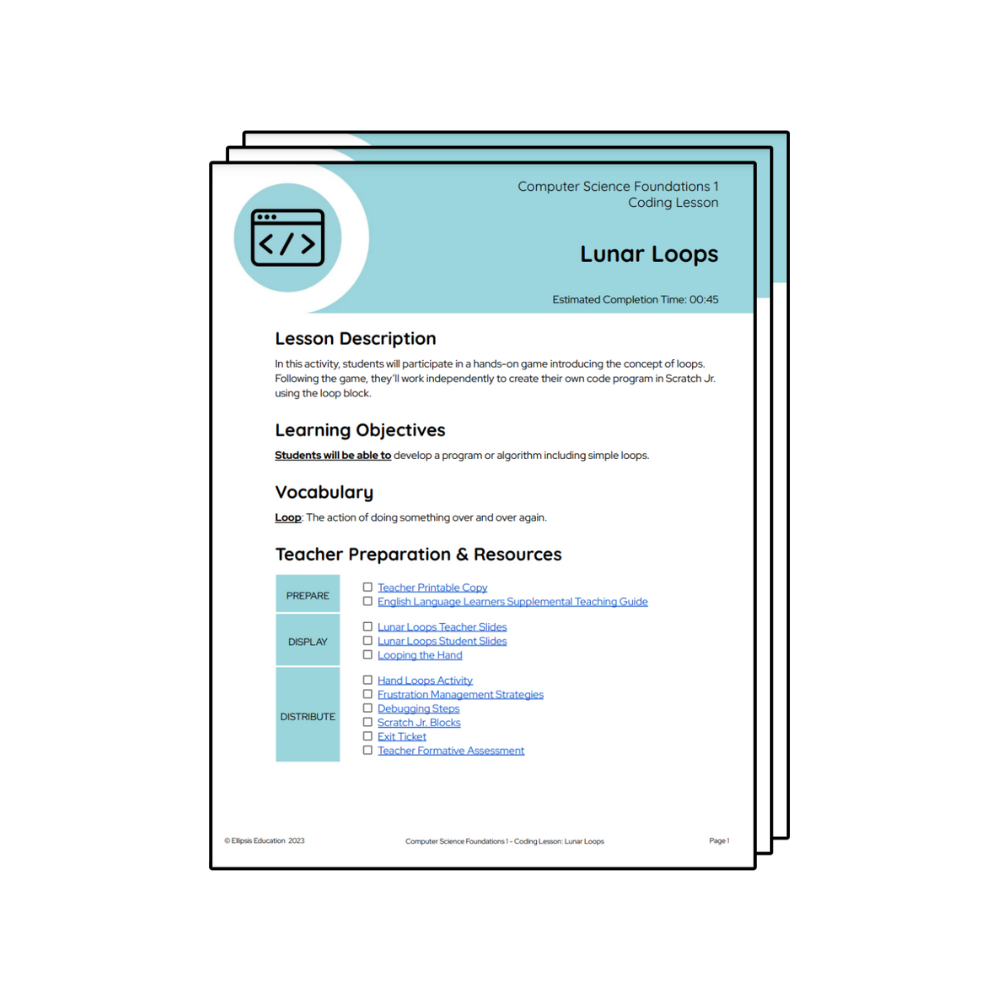Computational Thinking For Students
Computational thinking exercises help develop problem-solving, analytical, and creative skills. Ellipsis Education curriculum includes computational thinking for students of all ages, plus all the resources needed to bring computer science to life.
Ellipsis Computational Thinking Curriculum

Any Teacher Can Teach
From scripted lesson plans to robust training to continuous learning, Ellipsis helps teachers build confidence and capacity.

Everything in One Place
The Curriculum Delivery Platform houses all your computer science lessons – no more piecing together free resources.

Teacher-Led
Just like any reading or math curriculum, Ellipsis leverages your best resource: teachers.

Beyond Coding
Ellipsis lessons develop the attitudes, knowledge, and skills necessary to thrive – in academic settings and beyond.
Computational Thinking Lesson Plans
Download a free lesson plan from Ellipsis Education to use in your classroom.

Lunar Loops
In Lunar Loops, students will participate in a hands-on game introducing the concept of loops.

Treasure Map Coordinates
In Treasure Map Coordinates, students will code a sprite to move across a treasure map using the coordinate plane.

It’s All in the Details
In It’s All in the Details, students will practice debugging code within the Python programming language.
Ready to develop your students’ computational thinking skills?
Computer science courses from Ellipsis Education can help. We ensure teachers have the curriculum, resources, and support they need to confidently teach computer science – and computational thinking.
